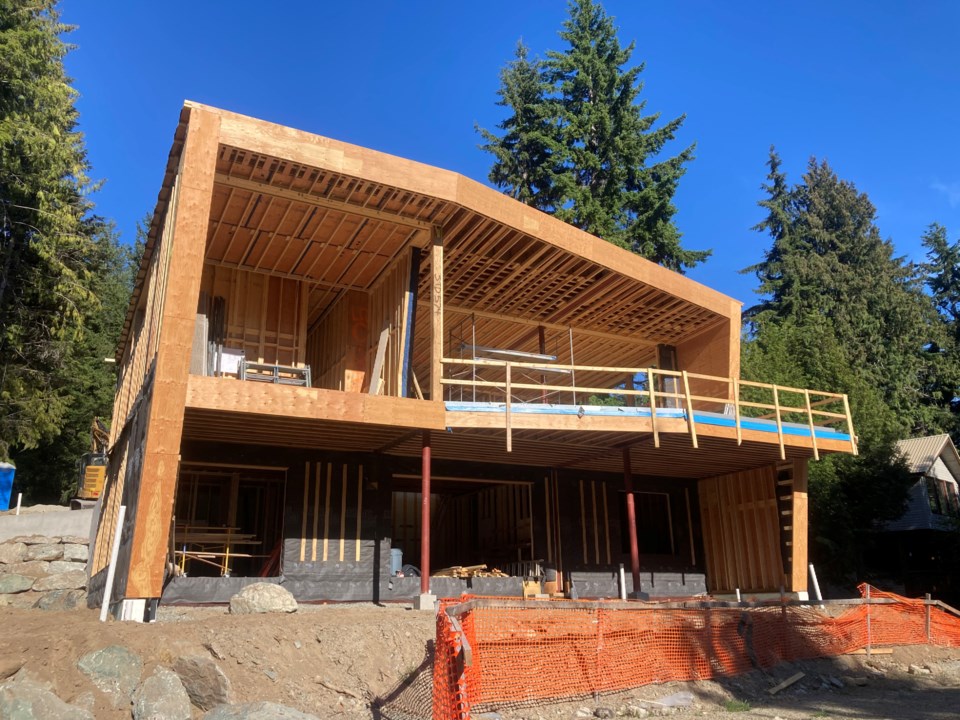Staffing shortages and complicated processes continue to affect permitting wait times at the Resort Municipality of Whistler (RMOW), but work is underway to change that.
At the July 4 Committee of the Whole (COW) meeting, building department manager Melissa Hollis outlined the challenges and presented strategies to reduce staff workloads and improve wait times.
According to Hollis, the main obstacle the RMOW faces in processing permits is a shortage of qualified personnel and ongoing difficulty recruiting new staff.
“As is the case in much of the Sea to Sky corridor, recruitment of qualified staff continues to be a huge challenge to the department,” Hollis said, noting the plan examiner team is the worst affected.
“We currently only have two permanent, full-time plan examiners, and what is contributing largely to the processing times … is the review process.”
While the building department has had moderate success filling vacancies on the building inspection team, adding two new full-time inspectors and a casual plumbing inspector in the last 12 months, the lack of plan checkers remains the main bottleneck in processing permits.
As of June 1, the wait time for initial reviews of building permit applications was five months for single-family residential homes and duplexes, eight months for multi-family and commercial developments, and five months for stand-alone plumbing permits.
Recruiting new employees has been an uphill task for the RMOW, as the lack of housing and the high cost of living in the resort have constrained the ability of recruiters to find interested candidates.
Hollis explained the department hired a recruiter who reached out to 108 qualified people across Canada, and only had a 50-per-cent response rate, of which 80 per cent were uninterested. Their reasons varied, from the location of the position to being happy with where they are or close to retirement.
“A big concern was location, tied to security of finding a residence and tying that into compensation,” Hollis said. “If someone is living in a lower-cost location and being paid the same, they weren’t willing to move.”
The building department is working to adapt to the challenging staffing situation by changing internal processes, identifying efficiencies, and streamlining document processes.
“We’re looking at opportunities to help improve our communication and resources for applicants to be able to submit a more complete and compliant application,” Hollis said.
Hollis highlighted Kelowna as an example of a B.C. municipality that undertook a similar review of its workflow and processes and successfully reduced permitting wait times.
The City of Kelowna implemented a front-desk plan checker to assist applicants with submissions to quickly turn around simple permits such as restoration and flood repairs. The RMOW is exploring how to structure a similar service, and reviewing what kind of recruitment and resources are required.
“We are redoing some of our application checklist forms to allow the team to have a good tool to only accept complete applications, but also to make the information clearer for the applicant,” Hollis said.
As part of this change, the department is looking at ways to tie in website improvements to make the process easier, and exploring ways to allow applicants to see where they are in the permit process.
Hollis said the building department aims to complete a substantial amount of the initiatives within six months, including redesigning the application forms, adding a frequently asked question section to the website, and providing guidelines for permit applicants.
“We will continue our recruitment on the plan examiner side, and Stage 1 of our digitization project will be complete by the fall, that is, taking all of our historical records and having them in a digital format to help with efficiencies of data management,” Hollis said.
In the next few months, the RMOW will transition to only accepting complete applications, and incomplete applications will be rejected.
If all goes according to plan, by Jan. 1, the building department will have all workflow and admin processes defined and documented, and will be close to beginning the second stage of the digitization program.
Mayor Jack Crompton welcomed the report, and said he is encouraged to see the progress—but acknowledged more work needs to be done.
“What we reviewed today is that there is no single solution to reducing wait times for permit applications,” Crompton said.
“We are challenged with recruiting key staff despite best efforts to do so and have ideas for how we can improve service to applicants so that we can make the system easier to navigate. We are focused on continual improvement.”




